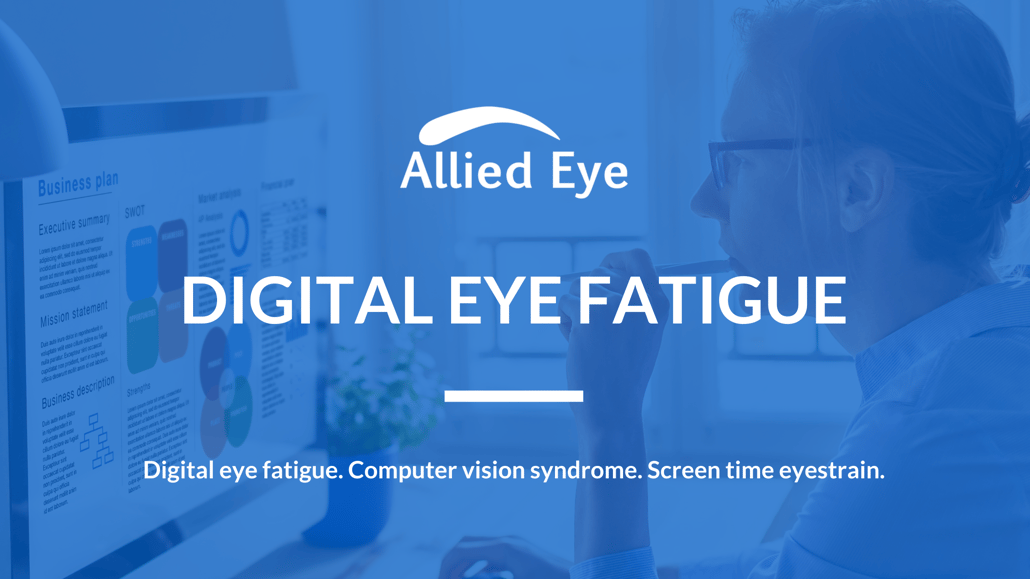Digital eye fatigue. Computer vision syndrome. Screen time eyestrain.
Whatever you call it, extended screen time is hard on the eyes. And now that school is back in session, more people—of all ages—are susceptible to this type of eyestrain.
Don’t automatically blame new eye pain or vision changes on your computer, however. A comprehensive eye exam is necessary to identify all the factors contributing to your symptoms.
What is digital eye fatigue?
When we spend a lot of time in front of screens, our eyes work harder than usual. This causes the eyes to grow tired, partly because we blink less often than normal. Prolonged computer, cell phone, and tablet use all contribute to the buildup of eye strain.
According to The Vision Council, the use of digital devices has increased in the home, workplace, and classroom. More than 83 percent of Americans say they use digital devices for more than two hours each day, and 60 percent report having symptoms of digital eye fatigue.
Symptoms of Computer Vision Syndrome
Common symptoms of digital eyestrain include:
- Tired, achy eyes.
- Dry eyes.
- Blurry vision.
- Neck and shoulder pain.
What is the 20-20-20 rule?
The 20-20-20 rule is an easy way to give your eyes regular breaks while working on the computer for long periods. Every 20 minutes, take a 20 second break to look at something 20 feet away.
How to Alleviate Digital Eye Fatigue
In addition to the 20-20-20 rule, these strategies can help alleviate screen time eyestrain:
- Make an effort to blink more frequently during screentime.
- Eliminate screen glare by using floor lamps instead of overhead lighting, and block excessive outdoor light with curtains or blinds.
- Adjust your screen settings so that the light level matches your surroundings. Screens that are too bright or too dark contribute to eyestrain.
- Experiment with text size and contrast levels to find the combination that works best for you.
- Position your computer screen so that it’s slightly below eye level and about 20 to 30 inches away from your eyes.
- Consider wearing blue light glasses while you work. Click here to learn more about short-wave blue light and blue light glasses.
Finally, take frequent breaks during your workday. Get up, move around, and stretch at least once an hour, if possible. Your eyes—and the rest of your body—will thank you.
Is digital eye fatigue ever a sign of something more serious?
Most of the time, computer vision syndrome symptoms are temporary and improve when you step away from the screen. However, experiencing severe digital eye fatigue could mean that you have an uncorrected vision problem, such as astigmatism or farsightedness. If it’s been a while since your last eye exam, excessive digital eyestrain could be a sign that your corrective lens prescription needs adjusting.
If you’re noticing symptoms related to digital eye fatigue and you’re in the Chattanooga area, call or text us at (423) 855-8522 to make an appointment for a comprehensive eye exam. We can determine whether your symptoms are caused by computer vision syndrome or another issue. Our Covid-19 safety measures are still in place to protect our valued patients.


